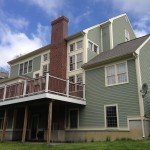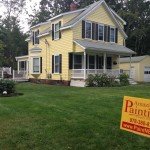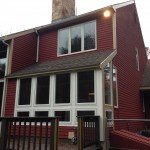Exterior Painting
When it comes to exterior painting, Amazing Painting Company is your #1 choice. A fresh coat of paint on a property’s exterior can work magic and significantly boost its curb appeal. Investing a little time and money on a paint job pays dividends. First, the periodic exterior painting of a residence prevents a degradation of its external siding and aesthetic features, as well as its structural components. Secondly, painting can accentuate and highlight a property’s architectural aspects and improve a home’s appearance. Exterior painting also serves the purpose of substantially contributing to a home’s real estate appreciation. We are experts in all types of exterior painting. Our preparation and painting process ensures that your house will remain looking beautiful long after the project is complete.
Exterior Painting Process
Protecting
- Drop cloths are used throughout the job to protect the landscape from debris and to collect all paint chips
- Protect roof and non-painted areas from paint drops and paint chips
Preparing
- Preparation of the surface – This is a critical element of any painting project. Surface preparation consists of :
- 1) inspecting the property in detail,
- 2) identifying signs of chalking, peeling, or blistering on the paint, as well as noting any water damage, and
- 3) proceeding with repairs
- Washing – Eliminates algae, mildew, dirt, mold, and chalking that accumulates over the years and restores a clean surface for the paint to adhere to the home.
- Scraping – The next step, which is typically completed in a period ranging from a few hours to a couple of days, involves scraping loose paint and/or stain that is peeling off the surface.
- Sanding – Amazing Painting then prepares for the siding’s priming by smoothing out the paint’s borders. Scraped areas can be hand sanded, and/or power sanded upon request when contracted.
- Light carpentry such as, clapboard, fascia, and sill replacement can be performed when contracted.
- Chemical stripping of wood as needed to remove excess paint buildup, or failing paint (we are also experienced in dealing with lead paint)
Applying
- Priming – Prior to applying the top coat, Amazing Painting sprays, rolls or brushes a high-end primer to the wood, metal, steel, aluminum or other surface. Priming ensures that the paint will adhere to the areas in need of being re-touched. Priming is done to all bare wood areas to increase adhesion
- Special priming is also done to certain problematic areas with cedar bleed or rust.
- Caulking is then applied to potential areas of water leaks, around windows, between joints, among other places. Amazing Painting also proceed to mask any nooks and crannies that they wish to protect from paint. All joints receive siliconized caulking to prevent moisture from penetrating behind wood.
- Paint is applied with brush and/or roller or sprayed and then back-brushed after all prep work is completed; we use sprayers on shutters, lattice and some hard-to-reach areas
When it comes to choosing the most flattering hues for your property, consider the following tips:
- Selecting one color for accents such as doors, one color for trim, and a third color for the siding
- Contrasting the accent and trim color in order to mask design defects and underline architectural details
- Utilizing fewer colors on simple homes and four to six colors on elaborate homes
- Coordinating the color of the paint with that of neighboring homes to maintain a sense of uniformity
- Harmonizing the new paint with the residence’s current colors
- Applying an accent color along the contour that contrasts with the home’s background in order to highlight architectural aspects
- Steering clear of extreme contrasts
- Choosing colors from the same color family
- Balancing shades over the entire home
- Harmonizing the exterior paint with the home’s interior colors
- Complementing the colors of the masonry and roof with those of the trim or siding
- Choosing accent colors for columns, shutters, and other details, as well as the trim
- Applying light colors to make the residence appear larger and darker shades to make it seem smaller
- Keeping in mind that intense colors tend to fade quicker, and that dark colors are more difficult to maintain than light colors
- Reserving glossy or semi-glossy paint for railings and columns since this type of coating tends to show brush strokes and flaws (even though it is also easier to maintain)
- Consulting historic color charts or applying a modern, bright shade to highlight architectural aspects when painting an older home
- Matching the new hue to the property’s landscaping









